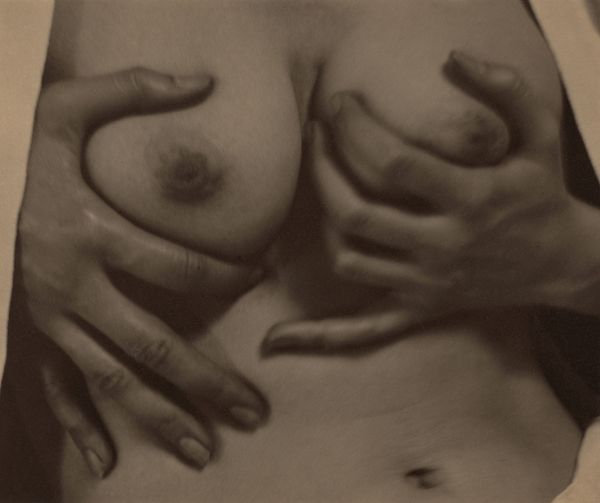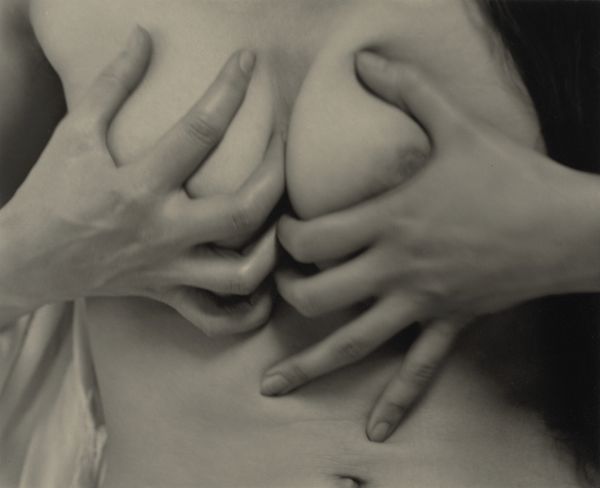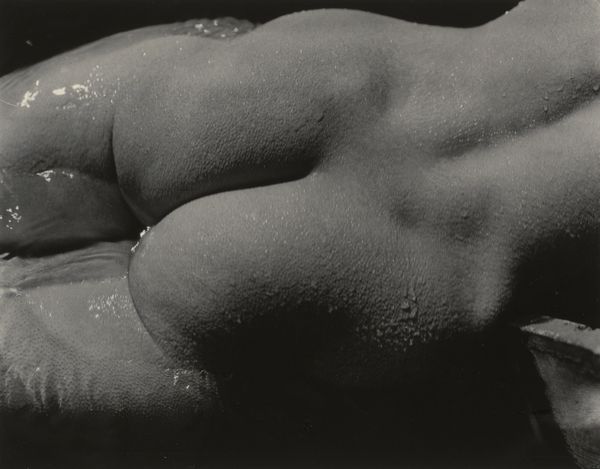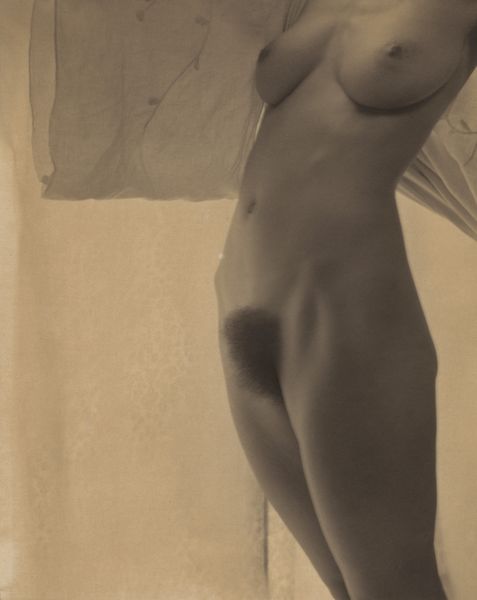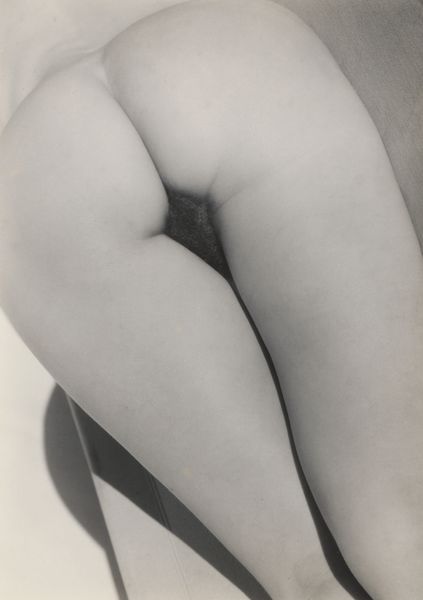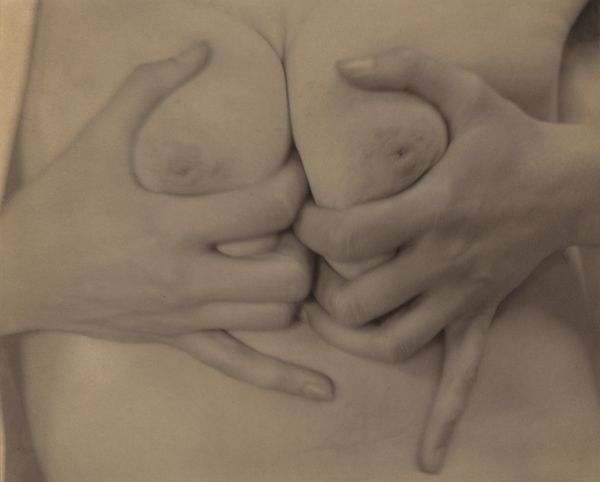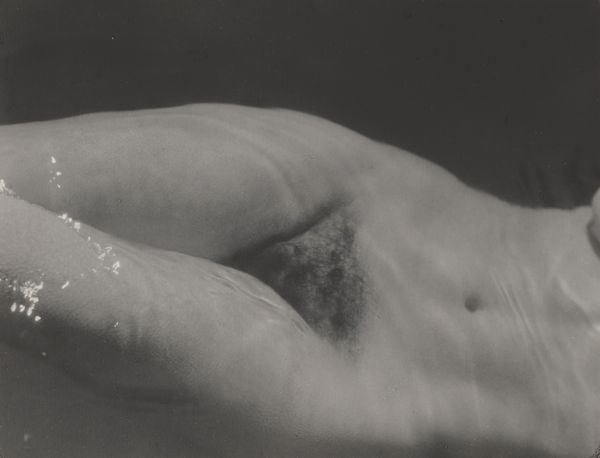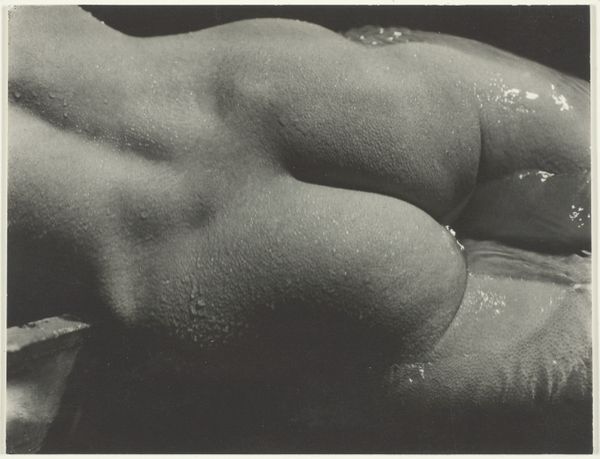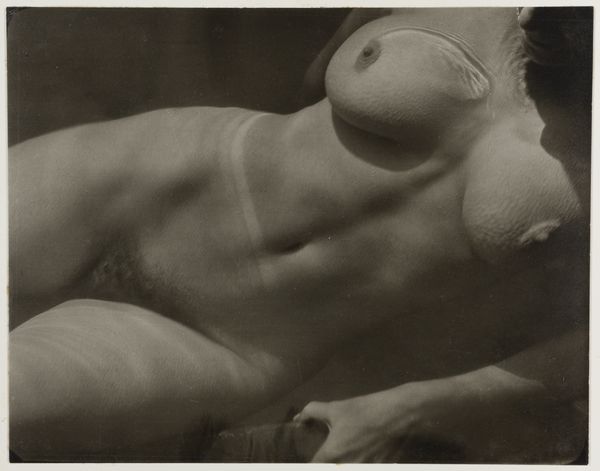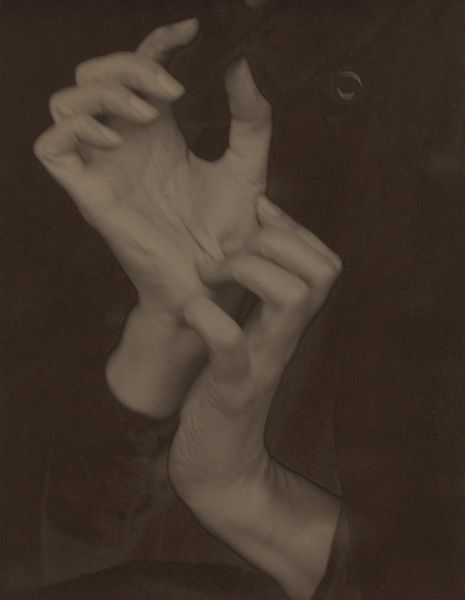
photography, gelatin-silver-print
#
pictorialism
#
figuration
#
photography
#
black and white
#
gelatin-silver-print
#
monochrome photography
#
monochrome
#
nude
#
modernism
#
monochrome
Dimensions: image: 11.8 × 9.1 cm (4 5/8 × 3 9/16 in.) sheet: 12.6 × 10 cm (4 15/16 × 3 15/16 in.) mount: 33.4 × 27.2 cm (13 1/8 × 10 11/16 in.)
Copyright: National Gallery of Art: CC0 1.0
Curator: This is Alfred Stieglitz’s photograph, "Rebecca Salsbury Strand," taken in 1922. It's a gelatin-silver print, rendered in monochrome. The intimacy of the composition and the model’s gesture create a sense of vulnerability. What do you make of it? Editor: It definitely has that quiet intimacy, but what strikes me are the almost clinical textures in the gelatin print, each tiny drop of water catching the light. Given its creation and his relationships, could the social context in the production of this work be as crucial as the artistic expression itself? Curator: Precisely! The gelatin-silver process, a relatively modern technology at the time, allowed for sharp detail and a wide tonal range. Stieglitz was very attuned to the means of production, almost an industrialist attitude to image making; and you are right to consider social and political context. Think about it. What does it mean that Stieglitz, known for championing photography as a fine art, chooses a gelatin print for a nude study? It connects it with mass production, breaking away from purely aesthetic pursuits. Is it more about challenging those categories and power dynamics than simply representing the body? Editor: So, the choice of gelatin silver moves beyond pure aesthetic choice. It implicates this piece in a dialogue about artistic production itself, which raises so many more questions about the meaning of the piece... Was it simply about seeing beauty? Or questioning labour, industrialisation, even ownership through the lens? Curator: Indeed. It compels us to consider photography as both an art form *and* a commodity. Seeing Stieglitz thinking that way helps us understand the complexities that drove his image-making, and indeed the artistic movements around him. Editor: I never would have looked at this piece and considered industrialization and the breakdown of boundaries. It highlights the tension between Stieglitz's artistic aspirations and his relationship to manufacturing. Thank you.
